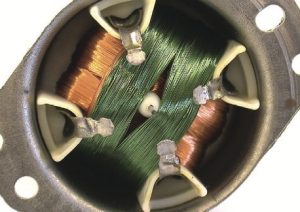Stage 1 – Stage 4: A guide to tuning stages
After we have remapped a customer’s car, it isn’t uncommon for that customer to start asking about what the next step is to gain more power. Having talked to our customers about this subject well over a hundred times, we thought it would be beneficial to write a handy guide for those of you who are interested in taking your vehicle’s performance to the next level.
So without further ado, let’s begin:
Tuning a vehicle is performed in stages. These stages are:
– Stage 1;
– Stage 2;
– Stage 3;
– Stage 4.
The reason stages are used is because they allow the customer and tuning company to budget effectively and also measure performance gains. By changing hardware and mechanical components in this way, we can see what gains each modification is bringing.
Editor’s note
It’s important to note that all vehicles are different and mechanical changes to one model may come before or after mechanical changes to another model. A typical example is a Mazda MX-5 – you can install a supercharger to this car without any additional modifications and this might be the first modification you make, but you wouldn’t do that to a Renault Clio 182.
What we have written below is a guide that we feel is relevant to most cars with modifications in an order which we feel would enable the owner to get the most out of their vehicle while not breaking the bank and while prolonging the life of their pride and joy. We have only listed engine and exhaust modifications below, not suspension/ transmission modifications.
Stage 1
A stage 1 tune is simply an ECU remap or chip tune. This is the most cost-effective way to modify any vehicle for performance. Turbo-diesel and turbo-petrol vehicles respond extremely well to stage 1 tuning and commonly see a 20 – 40% increase in bhp and torque.
A stage 1 tune is best combined with a high-performance air filter such as those from K&N or Pipercross, and we always recommend that the customer runs their vehicle on super-unleaded to burn off all of the crap in the engine and prolong the life of all mechanical components.
Stage 1 in a nutshell:
Remap;
High-performance air filter.
£195 – £500+ (or higher for the EPC Powerbox Elite).
Stage 2
A stage 2 tune involves fitting a turbo-back exhaust on turbocharged vehicles or a cat-back exhaust system on non-turbocharged vehicles. In either case, these systems are designed to improve airflow from the engine. They are also well-known for improving the sound of a car.
A stage 2 tune at the very least needs to be performed by somebody who can buy the right parts and fit them without any risk of getting it wrong. It is also at this stage that an upgraded induction kit is usually installed to improve airflow to the engine.
Stage 2 in a nutshell:
Stage 1 mods;
Turbo-back or cat-back exhaust (improves airflow from the engine);
Induction kit (improves airflow to the engine);
£400 – £800+ est.
Stage 3
A stage 3 tune is considered by most to be a level that’s best invested in for the track. That’s because it can be very expensive. It usually involves upgrading the intercooler, cylinder head and inlet valves, head gasket, and spark plugs in additional to all stage 2 modifications.
This stage will require a car to be set up on a rolling road to optimise the fuel and timing and correct exhaust emissions. It is also at this stage that the stock turbo on a car might be upgraded, although this is recommended as the final modification to complete vehicle tuning.
Stage 3 in a nutshell:
Stage 1 and stage 2 mods;
Upgraded turbo/ supercharger;
Upgraded intercooler;
Upgraded head gasket;
Upgraded inlet valves;
Upgraded spark plugs;
Exhaust manifold gasket;
£1k – £3k+ est.
Stage 4
Stage 4 is the last state of tuning for most cars. What’s modified for a tune to be classed as stage 4 is open to interpretation, but at the very least, it is here that an upgraded turbocharger/ supercharger, such as a hybrid turbo, is installed. Along with that, most tuning companies will also install a re-circulating dump valve and enlarged, ported wastegate.
Stage 4 may also include an upgraded oil cooler, multi-hole injectors, bearing assembly. In the vast majority of cases, stage 4 cars are not for road use and are instead track-only cars.
Stage 4 in a nutshell:
Stage 3 mods;
Further upgraded turbo/ supercharger;
Dump valve;
Multi-hole injectors;
Usually track-only;
£1 – £3k+ est.
You can start your Car Tuning Career here !
Are you tired of constantly being stuck in a dead-end job with no room for growth or advancement? If so, now is the time to take control of your future and invest in your career. With online car repair training, you can become a skilled auto mechanic in just a few short months and kickstart your journey to a successful and fulfilling career.
In today’s digital age, online learning has become more accessible and convenient than ever before. With online car repair training, you can study at your own pace and learn the latest techniques and technologies used in the automotive industry. From basic engine repair to advanced diagnostics, online courses offer a comprehensive curriculum that covers all aspects of automotive repair.
With the demand for skilled auto mechanics on the rise, now is the time to take advantage of the opportunities available in this lucrative field. Online car repair training offers flexible scheduling options, allowing you to balance your work and personal life while advancing your career.
So, why wait? Invest in your future today and sign up for online car repair training. You’ll be on your way to a fulfilling career in no time!
Take action now and enroll in an online car repair training course today. Start your journey towards a rewarding career in the automotive industry and start changing your life for the better.
*Get the Official Certificate after Completing the Course

You are probably taking this course for one of two reasons. Either you are preparing yourself to enter into the field of automotive service, or you are expanding your skills to include automotive electrical systems. In either case, congratulations on selecting one of the most fast-paced segments of the automotive industry. Working with the electrical systems can be challenging, yet very rewarding; however, it can also be very frustrating at times. For many people, learning electrical systems can be a struggle. It is my hope that I am able to present the course to you in such a manner that you will not only understand electrical systems, but will excel at it. There are many ways the theory of electricity can be explained, and many metaphors can be used. Some compare electricity to a water flow, while others explain it in a purely scientific fashion. Everyone learns differently. I am presenting electrical theory in a manner that I hope will be clear and concise. If you do not fully comprehend a concept, then it is important to discuss it with your instructor. Electricity is somewhat abstract; so if you do have questions, be sure to ask me in Udemy ask section.
Why Become an Electrical System Technician?
In the past, it was possible for technicians to work their entire careers and be able to almost completely avoid the vehicle’s electrical systems. They would specialize in engines, steering/ suspension, or brakes. Today, there is not a system on the vehicle that is immune to the role of electrical circuits. Engine controls, electronic suspension systems, and anti-lock brakes are common on today’s vehicles. Even electrical systems that were once thought of as being simple have evolved to computer controls. Headlights are now pulse-width modulated using high side drivers and will automatically brighten and dim based on the light intensity of oncoming traffic. Today’s vehicles are equipped with twenty or more computers, laser-guided cruise control, sonar park assist, infrared climate control, fiber optics, and radio frequency transponders and decoders. Simple systems have become more computers reliant. For example, the horn circuit on the 2008 Chrysler 300C involves three separate control modules to function. Even the tires have computers involved, with the addition of tire pressure monitoring systems!
Today’s technician must possess a full and complete electrical background to be able to succeed. The future will provide great opportunities for those technicians who have prepared themselves properly and learn more with this Car Mechanic Course.
On the off chance that you’re not especially precisely slanted, you might watch the people who are with appreciation, surprise, and irritation since they have something you don’t: a comprehension of how things work and how things fit together. Whenever they dismantle something, they can reassemble it how it was. Whenever they say that they need to investigate the hood, they can really get the darn thing open. Furthermore, when they need to change a level, they don’t endure ten minutes attempting to sort out which end of the raise is.
Fortunately, you don’t need to be brought into the world with a wrench in your grasp to know how to fix things — even things as apparently convoluted as a vehicle. I know; I’ve been there. The Introduction fills you in regarding my car revelation.
The Best Way to Learn Car Repair is start with this Auto Mechanic Course.
Obviously, the easiest errands can once in a while be the greatest obstacles to survive. All things considered, in the event that you couldn’t actually sort out some way to open the hood, how might you check the oil or the coolant level? That is the reason I start this course with the essentials: straightforward positions that you’ll have to do over and over — like opening the hood, lifting a vehicle, and replacing a tire. I likewise incorporate guidelines for filling the gas tank yourself (it’s less expensive than full-administration), a reliable technique for dismantling anything and assembling it back once more, and security pointers that each technician — experienced and amateur — ought to notice.










